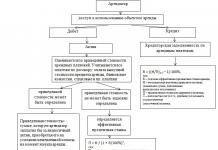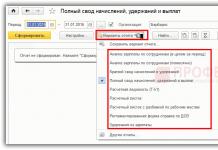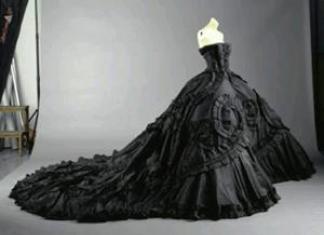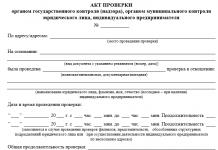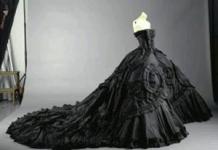Sea buckthorn is a rather unusual plant for most gardens. Many gardeners do not perceive it as a fruit crop. At the same time, this amazing, juicy berry should not be underestimated: sea buckthorn contains a simply unique set of useful substances. Just 100 g of berries or sea buckthorn juice is enough for the body to receive the daily requirement of almost all necessary substances.
In addition to its beneficial properties, sea buckthorn is also very beautiful. During the ripening of the berries, this plant is the best decoration of the garden. The bright orange fruits, densely clinging to the branches, are very colorful and create a pleasant autumn atmosphere.
Sea buckthorn bush with fruits
How to grow this wonderful berry crop on your site? An important stage in growing sea buckthorn is proper planting. It is this that is the key to good tree health and the reason for abundant harvests. In this article we will look at how to plant sea buckthorn correctly.
Selection of male and female sea buckthorn specimens
Sea buckthorn is a dioecious plant, pollinated by the wind. This means that there should be female and male specimens of sea buckthorn in the garden. You can determine the sex of sea buckthorn by its buds before they bloom, in spring, autumn or winter. This is especially true for a male plant, because the female plant is easy to identify in the summer by its flowers and fruits. You can choose male and female varieties of sea buckthorn in our catalog .
Male and female representatives are planted quite close to each other. A distance of 5-10 m is quite enough for good pollination.
One male specimen can pollinate 4-5 female sea buckthorn plants at once. However, it is better to plant two male plants.
If there is very little space in your garden, then both male plants can be planted close to each other - at a distance of 30-50 cm.
Choosing a place to plant sea buckthorn
Since sea buckthorn is a light-loving and moisture-loving plant, the optimal place for planting is a sunny, elevated area, not shaded by other plants.
In addition, sea buckthorn must be planted at the greatest distance from cultivation zones - it is recommended to make a distance from other plants of at least 2 m. The reason for this is the shallow location of the roots - 15-20 from the surface of the earth. Digging up the soil near sea buckthorn can lead to poor fruiting and the appearance of shoots in places where the plant's root system is damaged.

Sea buckthorn fruits
When is it better to plant sea buckthorn - in spring or autumn?
The best time for planting sea buckthorn seedlings is considered to be early spring, when the plant is dormant - until sap flow begins and the buds begin to swell. For planting in spring, seedlings with both closed and open root systems are suitable.
Autumn planting is also acceptable for the crop. In autumn, sea buckthorn is planted with a closed root system (in containers) after the end of leaf fall and at a comfortable temperature of +4 degrees.
Advantages of planting sea buckthorn in spring
- root system manages to fully get stronger ,
- since the seating area is prepared in advance - in the fall, pit with fertilizers manages to brew , which has a positive effect on the future harvest,
- when planting sea buckthorn in spring, the first the harvest can be harvested a year earlier than during autumn planting,
- easierhighlight plants , which are difficult to take root in order to provide the necessary additional care in time.
Advantages of planting sea buckthorn in the fall
- much is spent less time for care after landing,
- trees planted in autumn start growing 2-3 weeks earlier than those planted in spring,
- in autumn easy to determine the quality of seedlings by foliage and other criteria,
- autumn sales allow you to save your budget.
Step-by-step instructions on how to plant sea buckthorn
Planting sea buckthorn in the spring is not much different from planting other fruit crops; the only difference is in the rate of fertilizer. Sea buckthorn does not like soils that are too nutritious, so when planting, the main thing is not to overdo it with mineral and organic nutrition.
1. First, we prepare the landing hole. Its size should be 35-40 cm deep and 40-50 cm in diameter. Regardless of the time of planting, the pit is prepared in advance: for spring planting, it is prepared in the fall, for autumn planting, 3 weeks in advance.
2. Top and bottom layers of soil fold separately .
3. To the center of the pit drive in a peg for garter.
4. Saplings with open root system preparing - soak in a solution of Kornevin, Heteroauxin or other root system stimulants.
5. We fill the bottom of the pit nutritious soil mixture: add 1 bucket of humus or compost, 30-50 g of double superphosphate and 15-30 g of potassium fertilizers (per 1 plant) to the soil from the top layer.
6. Further form a mound from the top layer of soil, carefully straighten the roots and cover them with soil, periodically spilling the hole with water. Watering should be plentiful - until it becomes muddy. This will ensure that the soil adheres tightly to the root system.
8. Forming a circular hole around the seedling, thoroughly pour 2 buckets of water again and mulch the hole with peat, straw or old sawdust.
9. We tie up the sea buckthorn to the peg.

Sea buckthorn planting scheme
Sea buckthorn is one of the most unpretentious and hardy fruit crops, so there is nothing difficult in planting and growing it. Even a novice amateur gardener can grow and propagate it. Let's learn how to plant sea buckthorn and how to care for it in order to get a decent harvest.
Principles of growing and caring for sea buckthorn
Features of cultivation and care:
- Pair landing. The main feature of sea buckthorn is its dioeciousness. Sea buckthorn is not planted alone if you want to get berries. Fruiting sea buckthorn is a beautiful sight and a real decoration of the garden.
- More female plants. There is no need to plant a male plant for every female plant. Each bush with male flowers can pollinate up to 5 female flowers. Male plants die more often than female ones; to be on the safe side, it is better to plant more of them.
- Pollination direction. Sea buckthorn is a wind-pollinated crop, so its direction must be taken into account.
- Careful loosening. The root system of sea buckthorn is located close to the surface of the earth. When digging and loosening the soil, this must be taken into account.
- After each watering - loosening. Due to the characteristics of the sea buckthorn root system, the soil in its tree trunk circle must always be loosened.
How to distinguish male from female sea buckthorn?
It is possible to distinguish the “sex” of sea buckthorn bushes/trees growing on the site only after the first flower buds appear. This can only be done at 4-5 years of age.
Signs by which you can distinguish a female plant from a male one:
- Female plants have smaller buds and there are fewer of them than on male bushes.
- Male buds are collected in spike-shaped inflorescences.
- In male plants the leaf plates are flat, in female plants they are curved and cupped.
- The female flowers are yellowish in color, collected in inflorescences. Men's are greenish-silver.
- In late spring, the crown of male plants is bluish, while that of female plants is bright green.
At the seedling stage, it is very difficult to distinguish male and female plants, but it is possible - by the size of the buds (male ones are larger) and by the color of the leaves.
Among sea buckthorn there are varieties:
- Sweet. Sea buckthorn berries have always been sour, but today varieties with fruits of increased sweetness have been bred - Lyubimaya, Ruet, Tenga, Moskvichka, Nizhegorodskaya sweet, Moskovskaya pineapple, Klavdiya.
- No thorns. Without thorns, harvesting is greatly simplified. Popular thornless varieties are Solnechnaya, Zhivko, Sokratovskaya, Velikan, Podruga, Altaiskaya, Excellent, Chechek.
- Large-fruited. Sea buckthorn is strewn with small berries. If a crop is planted for the purpose of producing berries, it is advisable to plant large-fruited varieties - Elizaveta, Naran, Essel, Azhurnaya, Zlata, Augustina, Leykora.
- High yielding. Sea buckthorn is not only a highly ornamental plant, but also has economic benefits. There are varieties that yield 5-6 kg per plant, and there are also 20-25 kg. Among the high-yielding varieties are Obilnaya, Chuyskaya, Botanicheskaya aromatic, Panteleevskaya, Podarok Sad, Dar MGU.
- Short. Harvesting sea buckthorn by hand is labor-intensive work. If the plant is tall, then picking berries is even more difficult. The easiest way to collect berries is from bushes no more than 2.5 m high. Low-growing varieties of sea buckthorn include Yantarnaya, Thumbelina, Inya, Druzhina, Moscow Beauty, Baikal Ruby, Chulyshmanka, Bayan Gol.
- Mororesistant. Sea buckthorn is naturally more valued in the north, while fruit is preferred in the south. To bear fruit in northern conditions, the plant must be very frost-resistant. Sea buckthorn varieties with increased winter hardiness include varieties - Dzhemovaya, Zolotoy Pochatok, Trofimovskaya, Perchik, Ayula, Dar Katuni, Otradnaya.
- Men's. These are varieties for the production of pollen, which pollinates female plants. Breeders have developed special “male varieties” with improved pollinating abilities - one plant can pollinate up to 20 sea buckthorn bushes. These varieties include Gnome, Alei, Ogni Yenisei, Sayana, Ayaganga.
- Red-fruited. Red fruits are a rare phenomenon for sea buckthorn. Breeders managed to develop only a few red-fruited varieties - Ryabinovaya, Sibirsky Rumyanec, Krasnoplodnaya, Krasny Fakel, and Elochka.
Table 1 shows popular varieties of sea buckthorn and their comparative criteria.
Table 1
| Variety | Harvest from one bush, kg | Fruit weight, g | Oil content, % | Bush height, m | Crown | Ripening time |
| Gift to the garden | 10-15 | 0,8 | 4 | 3 | medium-compact | average |
| Golden Siberia | 12-22 | 0,8 | 4-6 | 3 | medium-compact | late |
| Nugget | 14-20 | 0,7 | 7 | 3 | medium spreading | average |
| Orange | 6-8 | 0,6 | 4-6 | 3 | spreading | late |
| Chuyskaya | 10-17 | 0,6 | 4-6 | 3 | relatively compact | early |
| Abundant | 12-15 | 0,5 | 5 | 3 | medium spreading | average |
| Gift of Katun | 10-12 | 0,4 | 3,5-7 | 3-3,5 | compact | average |
When and how is it better to plant sea buckthorn: in spring or autumn?
Sea buckthorn can be planted at any time - spring, autumn, even summer. Gardeners argue about the best time for planting, but there is no clear answer to this question. True, there are situations when spring planting has no alternative - it is safer and involves fewer risks for seedlings.

Planting sea buckthorn in autumn
It is worth choosing autumn planting if it is known for certain that the seedling grew in the same area. If planting material is brought from warmer regions, the tree can “wake up” in winter - in January-February, and frost is guaranteed to destroy it.
If planting is done in the fall, then certainly before the second half of October, since later the seedling simply will not have time to take root before the onset of frost. Autumn planting is advisable if the autumn is long and the seedling is strong, healthy, and meets all the requirements for planting material.
For autumn planting, prepare a hole and pour the soil mixture into it. Soil mixture ingredients:
- fertile land;
- a handful of double superphosphate;
- a bucket of humus;
- a glass of wood ash.
Then planting is carried out using standard technology. Preparing the soil mixture in the fall and pouring it into the hole is one of the stages of spring planting. In the spring, seedlings can be planted in soil well saturated with air and moisture.
If you cannot plant seedlings in the fall - for example, deadlines do not allow it - then you can dig them in to save them until spring:
- dig a ditch 0.5 m deep;
- place the seedlings in the ditch so that the crowns are turned to the south;
- bury the seedlings with soil so that only the tops remain visible;
- Water the seedlings well;
- cover the top with spruce branches;
- When snow appears, cover the shelter with it.
How to plant sea buckthorn in spring?
Most gardeners believe that it is better to plant sea buckthorn in the spring, before the buds open. In fact, the planting time is selected taking into account the climate and the adaptability of the variety to its conditions.
Spring planting is definitely safer for a young plant. The seedling manages to take root firmly and grow stronger before winter. Spring planting is done at the end of March or at the beginning of April - while the plants are dormant.
The area for planting has been prepared since the fall. The soil is dug up to a bayonet depth, adding 1 square meter. m:
- potassium sulfate – 20 g;
- superphosphate – 200 g;
- humus - 4-5 buckets.
In the spring, they dig holes 65 cm deep and wide. After 1.5-2 weeks, they begin planting.
Where to plant sea buckthorn on the site?
Sea buckthorn has some features of the root system that should be taken into account when choosing a planting site. Its roots grow in breadth, moving up to 5 m from the tree. But they do not lie deep at all - when digging up the soil they can be easily damaged.
Sea buckthorn is sensitive to root damage. That is why this plant should not be planted near garden beds - digging up the soil can damage the roots. Preference is given to the edges of the site - sea buckthorn is planted around the perimeter, where digging is not planned.
What kind of soil does sea buckthorn like?
Sea buckthorn is partial to moisture - it’s not for nothing that it prefers to grow near bodies of water. It needs soils that retain moisture well. The best option is chernozems, loams and sandy loam soils. These soils retain moisture longer than others.
But moisture should not be confused with swampiness - sea buckthorn does not tolerate stagnant water. It is also unacceptable to plant this plant in places with high groundwater levels - less than 1 m to the soil surface.
In the video, an experienced gardener talks about what kind of soil sea buckthorn likes:
Sea buckthorn in nature prefers to grow on sandy and pebble soils, which is why there is so much of it in the coastal zone of rivers.
How to choose sea buckthorn for planting?
If sea buckthorn is planted for the purpose of producing fruits, varietal planting material is required. In any case, female plants must be purchased from a nursery. But with men it’s easier - they can be wild. The optimal age for seedlings is 2 years.
Signs of a healthy seedling:
- there are 3 skeletal roots approximately 20 cm long, and a well-developed fibrous root system;
- seedling height – 30-50 cm, diameter – at least 6 mm;
- the trunk must have several shoots;
- the bark is elastic, fits tightly to the wood, the color is light, not brown.
The brown color of the bark of a sea buckthorn seedling indicates its damage by low temperatures.
Seedlings are selected from zoned varieties - this will protect them from early awakening, which is dangerous for their lives. For planting, grafted seedlings with well-developed roots and crown are selected.
Ask how the planting material was obtained. If by seeds or from root shoots, varietal characteristics may not be transmitted. Seedlings grown from cuttings always transmit the sex of the mother plant.
Landing requirements
Features of choosing a planting site for sea buckthorn:
- Sea buckthorn loves the sun, so it should be planted in areas exposed to the sun. Shading of the landing site is unacceptable. It happens that a seedling dies in the first years of life due to shading by weeds.
- Sea buckthorn is planted at a distance of several meters from fences and buildings. She also does not like being close to trees.
- The best place for sea buckthorn is the south side of the site. They plant it at the very edge so that nothing prevents the sea buckthorn from catching the sun's rays.
Before planting sea buckthorn, the soil should be prepared. First check its acidity. If the soil is acidic, add slaked lime to it. For 1 sq. m of soil - 300-400 g of lime. After sprinkling the lime, dig up the soil onto the bayonet of the shovel. Heavy clay soils are lightened by adding sand - two buckets per 1 square meter. m.
2 weeks after applying lime, you can fertilize the area. First of all, add organic matter - humus, manure, compost. Then mineral - superphosphate or complex fertilizers.
Fertilizers for planting seedlings can be applied both to the entire plot and to the planting holes. The distance between planting holes is 2 m.
Preparing seedlings for planting
The procedure for preparing sea buckthorn seedlings for planting:
- If the seedlings have leaves, tear them off.
- Immerse the roots of the seedling in water for 2-3 hours.
- Immediately before planting, dip the roots in a clay mash.
How to plant sea buckthorn in spring: step-by-step instructions
For spring planting, you must have holes prepared for planting - dug and fertilized. Over the winter, the soil is infused, saturated with moisture and oxygen - the root system of the seedling will be comfortable in such an environment.
In the spring, all that remains is to plant the seedlings prepared for planting. If you have to plant several seedlings, keep an interval of 2 m between them.
The procedure for planting seedlings in spring:
- Drive a stake into the center of the hole - this will be a support for the seedling. Bury the stake into solid ground so that it can reliably withstand the winds.
- Rake the soil mixture into the hill to comfortably place the roots of the seedling on its top. When placing a seedling in a hole, place it so that its root collar is 5-6 cm above the surface of the ground - it is strictly prohibited to bury it in the soil.
- Straighten them out and begin filling the hole with fertile soil mixed with humus, peat or coarse sand in a 1:1 ratio. As you fill, shake the seedling and tamp the soil with your hands so that there are no voids left between the roots. After filling the roots, carefully compact the soil around the seedling.
- Tie the seedling to a support. Use soft material that will not damage the thin bark of the tree, such as twine.
- Water the seedlings - 2 buckets per seedling.
- Sprinkle the tree trunk circle with mulch - dry grass, sawdust or straw.
The presented video shows step-by-step instructions for planting sea buckthorn, and also tells how to distinguish male sea buckthorn from female:
The male seedling is planted at the beginning of the row - on the windy side. Or in the center - surrounded by females.
When and how to transplant an adult sea buckthorn bush?
Transplanting sea buckthorn is a labor-intensive and risky task. Even when observing transplantation technology to the finest detail, gardeners often fail - the bush dies. Transplantation is an undesirable event, so try to plant the seedling immediately in the right place.
Painless and successful transplantation is possible for seedlings under 3 years of age. Features of sea buckthorn transplantation:
- Carefully dig up the plant, along with all the roots and a clod of soil.
- Transfer the sea buckthorn to a new place - into a pre-dug hole. Its dimensions should be such that a lump of earth along with its roots can comfortably fit in it. And most importantly, do not bury the root collar into the soil.
- Water the transplanted plant generously and. To help sea buckthorn take root better, add a root formation stimulator to the water for irrigation.
- Trim part of the crown so that the plant does not waste energy feeding the shoots; its task is to take root quickly.
- Spray the crown with Zircon or Epin (growth stimulants).
What can be planted next to sea buckthorn?
You cannot plant anything other than lawn grass directly under sea buckthorn. It is prohibited to plant plants with shallow roots near sea buckthorn - strawberries, raspberries, currants. By competing for nutrients, sea buckthorn will destroy them.
The best neighbor for sea buckthorn is the sea buckthorn itself. Trees or shrubs are placed at a distance of 2-2.5 m from each other.
Caring for sea buckthorn after planting
Sea buckthorn is a useful and beautiful plant that will decorate any garden plot. At the same time, it does not require much care from its owners - its agricultural technology is simple and does not differ in anything special.
The plant is resistant to pests and diseases, and the most important event in the life of sea buckthorn is pruning - with its help, gardeners form a healthy and beautiful plant by removing excess and damaged branches.
Rules for proper watering
Sea buckthorn is moisture-loving and needs regular watering. During the growing season, especially in the first year after planting, the crop is watered regularly, taking into account soil moisture and weather conditions. The watering norm for one young plant is 3 buckets, during the fruiting period – 5-6 buckets. Mature trees are given more water - 7-8 buckets.
When watering, it is important to follow the norm; waterlogged soil prevents air from reaching the roots.
When watering sea buckthorn, try to soak the entire circle around the trunk with moisture. As autumn approaches, use 1.5 times more water. Do not forget to do one moisture-recharging watering before winter - it is necessary for the winter hardiness of the plant.
Loosening, weeding, mulching
After each rain or watering, the soil is loosened, and at the same time weeds are removed. The roots of sea buckthorn are covered with nodules - bacteria live in them, which, by assimilating nitrogen from the air, enrich the soil with nitrogenous compounds. The latter are vital for the plant. If the soil becomes crusty, air will not flow to the roots, and as a result, the roots will not receive enough nutrition.
When loosening, take into account the characteristics of the sea buckthorn root system. In order not to damage the roots located close to the surface of the earth, do not loosen the soil deeper than 6-7 cm. It is not at all recommended to dig up the soil in the tree trunk circle.
To reduce the amount of loosening and the risk of injury to the roots, sprinkle the tree trunk circles with mulch. Humus or compost is suitable for this purpose - it can be prepared, for example, from potato tops or birch leaves.
How to prune correctly?
Sea buckthorn pruning can be done at any time except winter. But the best time for pruning is considered to be early spring. Pruning is carried out before sap flow begins.
Spring pruning
In spring, the plant needs sanitary pruning - all dry, damaged and disease-affected branches are removed. Formative pruning is also carried out on young sea buckthorn; the gardener decides how the plant will grow - as a tree or as a bush.
Principles and features of pruning sea buckthorn in spring:
- The young seedling is immediately pruned to a height of 10-20 cm. The stump will sprout branches, and shoots will also grow from the root. The next year, the gardener selects the 4 most powerful shoots, and the remaining ones are cut off. Root shoots can only be left on self-rooted seedlings.
- When forming a tree, a trunk 30 cm high is created on the seedling, and 2-4 skeletal branches are left. If the branches of the seedling are fully formed, there is no need to prune it. If there are no branches on them, shortening to 30 cm is necessary.
- In the second year, 3-4 skeletal branches and a conductor are formed from the grown shoots - then they are cut off at the same level.
- If after a year the shoots grow too rapidly, they are shortened by a third or a quarter.
- When the plant begins to bear fruit, pruning of the upper parts of the shoots is stopped - flower buds form on them.
After the tree is formed, all that remains is to regularly trim off the excess shoots:
- growing inside a tree/shrub;
- thickening the plant;
- shoots - they are pruned by digging up shoots and carefully cutting them into a ring.
When the sea buckthorn turns 6 years old, it will need anti-aging pruning. It is also best done in the spring. Branches that have stopped producing fruit are removed, replacing them with young and strong shoots. Every year they replace 1-3 branches - no more.
Watch a video about proper pruning of sea buckthorn:
Plants damaged by frost are cut down to the root collar. If the roots remain alive, then you can form a new bush or tree.
Pruning in autumn
In late autumn, when sea buckthorn begins its dormant period, sanitary pruning is carried out. Remove all old branches that are thickening, improperly grown, diseased, dry, etc. Pruning is carried out with a sharpened, disinfected tool.
How to fertilize sea buckthorn?
Feeding begins in the second year after planting. Organic matter is added annually - 1 bucket of humus or compost for each square meter. In adult plants, the root system itself provides the plant with nitrogen, so they only need phosphorus and potassium fertilizers - they are applied to the soil. But before reaching 5 years of age, sea buckthorn is fed with nitrogen, scattering ammonium nitrate around the tree trunk - 20 g per 1 square meter. m.
Fruiting sea buckthorn after flowering is given foliar feeding - it is sprayed with a solution of potassium humate (1 tbsp per 10 liters of water). After 20 days - re-feeding.
- wood ash – 100 g;
- superphosphate – 30 g;
- potassium salt – 25 g.
This amount is enough for 1 sq. m of soil. Acidic soils are fertilized with a mixture in which superphosphate is replaced with phosphate rock - 50 g per 1 square meter. m.
- early spring;
- during the flowering period (watered with solution);
- after flowering;
- 20 days after the last feeding.
Preparing the crop for winter
Sea buckthorn is a frost-resistant crop, so gardeners usually do not insulate it. But there are measures that can help the plant tolerate severe frosts more easily.
Activities to prepare for winter:
- insulation of the root zone with spruce branches and turf;
- whitewashing the trunk;
- trunk protection with metal mesh – to protect against rodents.

Care by region
Sea buckthorn can grow in any region of the Russian Federation - in the south, in the middle zone, in the north, in Siberia. Depending on climatic conditions, planting dates and care nuances change.
Planting and caring for sea buckthorn in the Moscow region
In the Moscow region, sea buckthorn is planted at the end of March or at the beginning of April, depending on the weather. Planting is done before the sap begins to flow, but the temperature must be above zero. To reduce hassle and risks, only zoned varieties should be planted.
The climate of the Moscow region is perfect for sea buckthorn. There are about 60 varieties zoned here - there is plenty to choose from. It is not at all necessary to insulate such sea buckthorn. Recommended varieties for the Moscow region are in Table 2.
table 2
| Variety | Number of spikes | Fruit | Yield per plant, kg | |
| Moscow pineapple | compact bush | minor | dark orange, with a red spot on the tip | up to 14 |
| Lomonosovskaya | medium-sized tree | minor | large, orange-red | 14-16 |
| Botanical amateur | medium-sized tree | minor | large, yellow-orange | up to 20 |
| Botanical fragrant | medium-sized, spreading tree | minor | orange-brown | 12-14 |
| Fragrant | medium-sized tree | average | large, red-orange | up to 16 |
Planting and caring for sea buckthorn in the Siberian region
In Siberia, sea buckthorn is planted at the end of April or at the beginning of May - they wait for stable warmth. Many varieties of sea buckthorn have been bred for Siberia and can withstand harsh climates without problems. In Siberia, the agricultural technology for growing the crop in question is no different from the work carried out in the middle zone. Popular varieties of sea buckthorn for Siberia are shown in Table 3.
Table 3
| Variety | Botanical form (bush/tree) | Number of spikes | Fruit | Yield per plant, kg |
| Golden Siberia | medium-sized bush | very little | orange | 12-14 |
| Zhivko | medium-sized multi-stemmed bush | few | orange-yellow | to 10 |
| Elizabeth | medium-sized bush | very little | orange | up to 12 |
| Jam | low-growing bush | No | orange-red | 12-15 |
| Giant | medium-sized bush | No | orange | 13-20 |
| Altai | medium-sized compact bush | No | bright orange | 12-14 |
Sea buckthorn propagation
Sea buckthorn reproduces well by various methods - seeds, cuttings, layering, shoots, grafting, dividing the bush. Each gardener decides for himself how it is more convenient for him to propagate the plant.
Vaccination
This is the most complex and time-consuming method of reproduction. It is used only by experienced gardeners. Vaccination goals:
- A male cutting is grafted onto a female bush so as not to plant a new seedling.
- For growing varietal plants on viable rootstocks.

Features and procedure for sea buckthorn grafting:
- Start grafting in late April or early May.
- For the rootstock, use a two-year-old seedling grown from a seed.
- Cut the trunk of the rootstock 15 cm above the root collar. Leave one powerful shoot 10 cm tall on the rootstock, cut off all others.
- Over the summer, the left shoot should get stronger. Pinch it so that it becomes thicker and does not grow upward. At the bottom, remove all growth - at a height of up to 15 cm.
- By next spring the shoot turns into a standard.
- By the third spring, the height of the plant reaches 50-60 cm, and its diameter is 5-9 mm. Perform copulation at a height of 10 cm from the root collar.
Gardeners have noticed that cuttings taken from male plants and grafted onto rootstocks take less root than cuttings taken from female plants.
Seed propagation
If you are interested in obtaining a varietal plant, the seed propagation method is not suitable for you. A plant obtained from a seed does not bear the varietal characteristics of the mother bush (tree). Seedlings are usually used as rootstocks for grafting.
Features of propagation by seeds:
- Seed germination lasts for at least 2 years.
- Before sowing, the seeds are kept in the refrigerator for 1.5 months - on a vegetable shelf.
- Sowing - at the end of April. The seeds are not deeply buried. The container with seeds is covered with film or glass and placed in a warm, bright place. After 1-2 weeks, shoots will appear.
- In mid-July, the seedlings are transplanted to a permanent location. Before planting, their taproot is shortened.
Cuttings
Cuttings are harvested in the fall - at the end of November-beginning of December, or in the spring - at the end of March-beginning of April. Use 2-year-old growths with a thickness of at least 6 mm. The length of the cuttings is 15-20 cm. Autumn cuttings, tied into a bundle, are wrapped in fabric and polyethylene, and stored covered with soil, spruce branches and snow.
The procedure for planting cuttings in the spring:
- The cuttings are placed in water for 3 days - it is changed regularly. Many gardeners add a root growth stimulator to the water.
- The cuttings are planted in the ground - with a slight slope. At least 2-3 buds should remain above the ground. Most of the buds end up in the ground. By autumn, the cuttings grow up to 60 cm. In the 3rd year, the plant will bear its first fruits.
Green cuttings are more difficult to root than lignified ones. It is necessary to create special conditions, a loose soil mixture, sand, growth stimulants, water spraying, etc. are required.
By layering
For this method you will need young sea buckthorn with well-bending branches. Reproduction order by layering:
- Select branches with good growth in the spring.
- Bend the selected branch and place it in a shallow groove.
- Secure the branch. Fill the ditch with soil.
- During the season, water, feed and loosen the soil.
By next spring the layering will be stronger. Dig it up, cutting it off from the mother plant, and replant it in a permanent place.
Overgrowth
Features of propagation by shoots:
- For propagation, choose shoots that are 1.5 m or further from the mother plant - their root system, as a rule, is already formed.
- During the season, hill up the shoots high, feed and water them.
- In the spring, cut off the shoots selected for propagation and plant them in a permanent place.
Dividing the bush
The order of propagation of sea buckthorn by dividing the bush:
- Dig up the bush and trim off the old branches.
- Use pruning shears to divide the bush into parts. Each division must have a developed root system.
- Sprinkle the cut area with charcoal.
- Plant parts of the bush in planting holes. Next, care for it as you would for regular seedlings.
Flowering and fruiting
Male plants bear male (staminate) flowers. On the female ones there are female (pistillate) flowers. Staminate flowers are sources of pollen necessary for fruiting. Pollen reaches the female plant through the air - that’s where the fruit will be. Male bushes do not bear fruit.

Sea buckthorn flowering
Flowering of plants of different sexes must occur simultaneously, otherwise there is no point in their proximity. The timing of flowering is affected by weather conditions and climate. In the middle zone, the crop blooms in the 2nd half of May and blooms for half a month. In Siberia, sea buckthorn blooms at the end of May.
There are no nectaries in sea buckthorn flowers. Plants have to rely mainly on the wind. If the weather is calm, gardeners have to work as pollinators. To transfer pollen to the female flowers, they cut off the branches and fan the female plant with them.
In what year after planting does sea buckthorn bear fruit?
The first fruits on sea buckthorn are expected by the fourth year. But a full harvest is harvested only in the 6th year of life. At this age, the plant (tree or shrub) finishes forming and directs all its vital forces to the harvest.
Sea buckthorn growing business
The most valuable sea buckthorn product is sea buckthorn oil. It is prepared from yellow (orange) fruits that grow in abundance on female plants. Sea buckthorn oil is used for medical purposes and in cosmetology - it is a very valuable product with regenerating properties.
On an industrial scale, sea buckthorn is grown mainly for oil production. For this purpose, special technical varieties are planted - their fruits do not have a good taste, but they contain a lot of oil - 6.2-6.8%. Dessert varieties contain 2-6% oil.
Today, medicinal crops are in high demand on the market. Exotic products are being replaced by proven products grown in their homeland. Sea buckthorn is unpretentious, hardy, does not require much labor - it can become the subject of an excellent business. The cost of planting 1 hectare of sea buckthorn is about 2000 euros. The investment pays off in 3 years. At least 15 tons are collected from 1 hectare. The price of 1 kg is 150 rubles.
Sea buckthorn oil is not the only product obtained from sea buckthorn fruits. The market can also be offered:
- fresh sea buckthorn;
- dried fruits;
- frozen fruits;
- syrups;
- tinctures;
- jam;
Sea buckthorn leaves are also useful - they are dried and made into tea. You can dry the leaves, package them and sell them. Another interesting idea is to place an apiary next to the sea buckthorn plantation - you can obtain valuable sea buckthorn honey.
Diseases and pests
Compared to other fruit crops, sea buckthorn rarely gets sick. But there are several diseases that can be very dangerous for sea buckthorn. Table 4 shows common diseases and pests of sea buckthorn, and measures to combat them.
Table 4
| Diseases/pests | Symptoms/harm | How to fight? |
| Verticillium | A fungal disease that causes rapid withering of leaves and fruits, and then the entire tree. | There is no cure. A sick tree is uprooted. At the place of growth they are quarantined for 2-3 years. |
| Endomycosis | A fungal disease that affects the fruits of a plant shortly before technical ripeness. | Spray with copper oxychloride during the growing season. Be sure to re-spray after fruit set. |
| Blackleg | A fungal disease that thins the trunks of seedlings. | Seedlings are watered with a solution of potassium permanganate - once a week, and if necessary, if the disease begins to manifest itself - daily. |
| Sea buckthorn moth | Caterpillars eat buds and leaves. | Spraying with 0.5% Chlorophos during bud break. |
| Sea buckthorn fly | It affects fruits - they shrink and wither. | Treatment in July with Chlorophos solution 0.2%. |
| Sea buckthorn aphid | Sucks juices from leaves. It weakens the plant - death is possible. | Spray with Karbofos 10% twice - during bud break and again after 2 weeks. |
Harvesting sea buckthorn is a labor-intensive task; it is especially difficult to collect fruits from thorny varieties. Therefore, gardeners have come up with a huge number of devices to make harvesting easier.

Hand picking berries
Manual harvesting from a tree is a grueling task, permissible only for small volumes of harvest. Easy collection method:
- cut branches with berries;
- put the branches in the freezer;
- After a day, remove the branches to remove the berries, just run your hand over them.
Carefully cut the branches with pruning shears - breaking them off is unacceptable. Only fruit-bearing shoots are subject to cutting and must be sanitized in the fall. You can wait for frost and shake the branches. Fruits and leaves are falling - all that remains is to sort them.
In October, sea buckthorn is collected for oil and juice while wearing rubber gloves. The berries are crushed directly on the branch, dumping the pulp and juice into a nearby container. Before harvesting, water the plant with water from a hose to wash away dust from the fruit.
Mechanical berry picking
To harvest from several trees or from an entire sea buckthorn plantation, you cannot do without mechanical devices. Quite a lot of them have been invented and produced:
- Forceps. Sold in stores. The collection speeds up, but still takes a lot of time. Plus - the tree is not injured. You can use tongs to remove each berry individually. This option is suitable for 1-2 trees, no more.
- Slingshot. Berries are cut from the branches. The tool is made of wire stretched over a suitable device - for example, a vegetable peeler. The cut berries fall directly into the collection container. The downside is the risk of cutting off fruit buds.
- Scraper. Quickly clears branches of berries. Looks like a slingshot with tongs. Holding the branch, pull the tool towards you, and the cut fruits fall into the container.
- Combine. This is an industrial tool made of plastic. Allows you to pick berries without damaging the plant. Harvesters are produced in different configurations, but they all operate on the same principle. The harvester is a manual attachment with a container for berries. The fruit is cut using a working surface resembling a comb. 7
City Novosibirsk
Publications: 250For many years, sea buckthorn has been an indispensable product that is widely used in cosmetology and medicine. Berries contain a large supply of minerals and vitamins. Sea buckthorn oil has healing properties and can relieve many diseases. Sea buckthorn has a sweet and sour taste; the fruits can be medium or large in size. The colors are very different: yellow-orange, orange, red.
Sea buckthorn chooses habitats on the banks of rivers and seas. That is why in different countries the culture can be called “sea thorn”. In Russia, the berries of the crop are called sea buckthorn, as they literally stick to the branches. Sea buckthorn belongs to the sucker family. There are both low-growing sea buckthorn shrubs and vigorous ones. As a rule, the foliage of the shrubs is thin, gray-gray, flowering begins to appear before the foliage, and does not have a specific smell.
Sea buckthorn is now widely known buckthorn-shaped. This variety is known almost all over the world. And also sea buckthorn, which can be found in the mountains of Nepal, India, as well as in the southern regions of Chinese towns.
Features of sea buckthorn
There are both female and male shrubs. In order to harvest a good harvest of berries, it is necessary to plant male and female trees nearby. The culture is dioecious. It is allowed that the male bush be from wild species, and the female bush must be from good varieties. However, many experienced gardeners advise taking varieties such as Dear Friend, Alei or Ural as a male tree. Such varieties grow well in regions Moscow region and Siberia.
The sex of seedlings can be determined by focusing on the buds. This should be done in spring, winter or autumn, when there is no foliage on the bushes. In addition, female varieties can be recognized in summer by their flowering or fruit.
Here are the main differences:
- The buds of female plants are 2 or 3 times smaller than male ones and have 2 covering scales;
- Male buds are large and have 5-7 covering scales.
Any selected variety must be adapted to the climatic conditions of the region. It is important to observe this condition, since sea buckthorn has a short dormant period. Already around January, the culture can awaken and be ready to function. Thus, sea buckthorn varieties that were bred in certain regions will not be able to survive in the climatic conditions of another region.
Sea buckthorn varieties
Giant
The variety is sold, as a rule, in the form of shrubs, but also in the form of trees. The crown of the plants is cone-shaped, without thorns.
The height of the trees can reach 3.5 meters. The fruits are cylindrical in shape, bright orange in color, and have a sweet and sour taste. The berries are located on a short stalk.
Altai
The tree crown has virtually no thorns. The berries ripen in August. Fruit weight is 0.7 grams.
The berries are sweet in taste and have a pineapple aroma. The fruits are characterized by easy separation from the stalk.
Chuyskaya
 The crown of the bushes is sparse, but spreading and lends itself well to shaping. The culture belongs to the high-yielding varieties of sea buckthorn.
The crown of the bushes is sparse, but spreading and lends itself well to shaping. The culture belongs to the high-yielding varieties of sea buckthorn.
From one bush you can collect up to 12 kilograms of fruit. The shape of the berries is oval and slightly elongated. Ripening occurs in summer.
Important! There are many other varieties of sea buckthorn. For example, non-thorny sea buckthorn, self-fertile sea buckthorn. In addition, there are decorative plant varieties.
What kind of lighting does sea buckthorn like?
Sea buckthorn needs light and moisture. Shrubs should be planted in sunny areas that are not shaded by other crops. After planting, the seedlings do not need care for the first three years. If you plant a small seedling and allow it to become overgrown with other plants, this will have a bad effect on sea buckthorn. As a result, the bush may simply die from lack of light.
At the very beginning of a plant's life, it is important to maintain a certain level of humidity. It is ideal if you plant sea buckthorn on sandy or loamy soils. It is these soils that can retain moisture for a long time and also do not allow moisture to evaporate. In addition, you should choose elevated locations, as the crop does not feel comfortable in groundwater.
Proper planting of sea buckthorn seedlings
Proper planting of plants is a guarantee of good development of seedlings and an excellent harvest in the future.
Planting dates: when to plant sea buckthorn, in spring or autumn
The optimal period for planting plants is in the spring before the buds swell or flowering begins. If you plant a seedling in the fall, the percentage that the tree will survive is small. If there is no choice and planting in the fall is necessary, then this should be done before October, when frosts have not yet begun.
Watch the video! Spring planting of sea buckthorn. How to distinguish male sea buckthorn from female
Selection and preparation of seedlings for planting
Two-year-old plants take root most successfully. However, if you properly care for an annual seedling, then there is a chance of growing a strong tree and getting a good harvest of berries every year. A healthy seedling should be 35-50 centimeters in height and 0.8 centimeters in diameter. It is optimal if the seedling has at least three main root processes and many fibrous ones.
The plant bark should not have brown spots and should look elastic. The absence of darkening on the bark indicates that the seedling is suitable for planting and can withstand frost.
Important! Male trees are capable of pollinating at a distance of up to 15 meters, so if such a shrub grows in the neighborhood, you can plant a female seedling, thereby saving space on the site.
Digging a hole
The holes should be 0.6 x 0.6 x 0.6 meters in size. The bottom should be filled with drainage approximately 10-12 centimeters thick. Make a mound in the hole and place the plant there vertically, carefully straightening the roots. Next, add organic fertilizers, sand and soil in equal proportions. The root collar needs to be deepened by about 3-5 centimeters. Then form a hole and pour two buckets of water. Next, do mulching.
Planting scheme
 It is worth remembering that it is necessary to plant both a female and a male tree in one area. The crop has a developed crown, so the optimal distance between shrubs should not be less than 2.5 meters. There are two methods for planting sea buckthorn:
It is worth remembering that it is necessary to plant both a female and a male tree in one area. The crop has a developed crown, so the optimal distance between shrubs should not be less than 2.5 meters. There are two methods for planting sea buckthorn:
- Place a male seedling in the center and plant female trees around it;
- Plant the male tree on the leeward side, and the female trees behind it. sea buckthorn seedlings.
Rules for caring for sea buckthorn in the garden
After the crop has been planted on the site, it is important not to forget to care for the tree. Care, as well as planting sea buckthorn, must be timely and competent.
When to water the plant
The culture is a moisture-loving plant and requires regular watering. During the growing season, and especially in the first year of planting, 3 buckets of water should be poured into the hole, and during the period of fruit ripening - up to 6 buckets.
Important! Excess moisture in the soil, and especially its stagnation, can harm trees and their root system. Therefore, in order not to block the access of air to the roots, it is necessary to observe the measure.
Soil care
The soil should be loosened regularly. But it is worth remembering that the roots are located high and loosening should be carried out no deeper than 7 centimeters. You should not dig up the area next to the hole.
Plant nutrition
Seedlings should be fed annually. First year plants do not need to be fertilized. And then every spring you need to add organic matter: humus or compost at the rate of 1 bucket per 1 square meter. m of soil. You should also pay attention to nitrogen-based fertilizers. They are usually diluted at the rate of 30 grams per 1 bucket of water. Nitrogen fertilizers have a positive effect on the yield and growth of trees.
How to prune sea buckthorn
If during the first years of growth the bushes were correctly formed, then there is no need to prune them. If it happens that there are few shoots on the tree, then the trunk should be shortened. A tree that is 4-5 years old should undergo formative pruning and remove all branches that are parallel to the trunk. Mature shrubs require careful pruning, as the branches begin to dry out and the level of fruiting decreases.
All mature and dry branches should be removed and the tree rejuvenated to three-year-old shoots. Don’t forget about the root growth; it is important to remove it so that young growth does not form on the root buds.
Watch the video! How to properly trim and shape sea buckthorn in the garden
A little about sea buckthorn propagation
The crop can be propagated using cuttings, seeds, suckers or grafting:
- The easiest way to grow a new shrub is to use a shovel to separate the offspring that grew next to the mother one. Next, the offspring needs to be watered, and with the onset of spring, planted in open ground;
- Seeds are practically unable to convey the qualities of varietal shrubs. If this method of reproduction is used, then it is worth doing it in the spring. Before planting, the seeds must be soaked in water for 5 days. The soil must be well heated. Holes for planting should be 5-7 centimeters deep;
- When propagating by cuttings in late autumn, you need to cut one or two-year-old shoots, which should overwinter at a temperature of 0 - +2 °C. Next in the spring, the cuttings should be cut 15-20 centimeters in length and deepened into the soil by 10 centimeters, the buds should remain above the surface of the ground. If you water the cuttings daily, then around the autumn the seedlings will have time to take root;
- Grafting is one of the most unpopular types of reproduction. Usually, a male cutting is used for grafting onto a female tree to pollinate if it is not possible to plant a full-fledged tree nearby.
Main plant diseases and pests
The most famous crop pests:
- Sea buckthorn fly;
- Gall mite;
- Sea buckthorn moth;
- Sea buckthorn aphid.
To control pests, it is customary to use special fungicides, which can be purchased at any specialty store.
 Culture diseases:
Culture diseases:
- Scab;
- Blackleg;
- Verticillium wilt;
- Endomycosis.
You should fight with copper oxychloride, a solution of potassium permanganate or a preparation based on Nitrofen.
Important! Diseases and pests primarily affect tree buds, so shrubs should be inspected early in the growing season.
Sea buckthorn: harvesting
Harvest should be done when the fruits acquire a bright orange color and become elastic. The optimum temperature should not be lower than -15 °C. Berry picking should be in the morning or evening hours. Branches can be plucked or cut. Sea buckthorn fruits can be stored dried or frozen in plastic bags. Shelf life up to six months.
Conclusion
Planting sea buckthorn in open ground - the process is simple. If you follow certain rules of agricultural technology, then you can grow this healthy and vitamin-rich crop on your plot without any problems.
Watch the video! Sea buckthorn: planting, growing, care
Despite the fact that the healing power and benefits of sea buckthorn are known to everyone, not everyone is in a hurry to plant it on their plot. The reason is that very often an unpleasantly thorny tall tree grows on the site,
producing a large amount of difficult-to-remove shoots, from which it is not so easy to harvest, the berries of which have a sour taste and tend to burst in your hands when collected from the branches. However, all this is absolutely not true if we are talking about varietal sea buckthorn, and not about wild seedlings, which, alas, are not so rarely passed off as varietal specimens. Real high-quality garden sea buckthorn is large, bright fruits with a pleasant sweet and sour taste. A properly planted and formed tree makes the harvesting process convenient and comfortable. Let's talk about how to plant sea buckthorn so that the impressions from its cultivation remain the most positive.
General description with photo
The name sea buckthorn is a Russian variation and was given to the tree for the peculiarity of its fruiting - the branches of the plant seem to be covered with short-petioled berries on all sides. The genus is assigned to the Lokhov family. Among its representatives there are both low-growing varieties and very tall varieties. Sea buckthorn leaves are easily recognizable, thin, similar to willow leaves, gray-gray in color. Anyone who does not know how sea buckthorn blooms sometimes mistakes its flowers for leaves in the spring, which appear before them and have a very inconspicuous appearance and a complete lack of aroma. The two most common varieties in cultivation are buckthorn and willow-leaved sea buckthorn. The first has a very wide habitat throughout the world, the second grows mainly in the wild nature of India, Bhutan, as well as in Nepal and southern China.
Features of sea buckthorn
Since this species is grown in our gardens more often than others, it is worth talking about its characteristics to understand agricultural technology and obtain a high-quality future harvest. First of all, you should know that the plant is dioecious, which means it requires planting two seedlings of different sexes in close proximity to each other. In this case, the origin of the male specimen does not play a big role; it can also be taken from the wild. As for the female, it must be purebred and belong to a high-quality varietal line. For those who do not want to take risks and want to have a decent pair, we can recommend specially bred varieties “Ural” or “Aley” as a male pollinator. The “Dear Friend” variety also performs very well. This recommendation applies to the central Russian region (all three varieties are zoned, which is very important for this fruit crop).
To correctly and reliably determine the sex of a purchased seedling, you need to pay attention to the type of buds. It is best to do this in the absence of leaves, i.e. not in summer. The difference is clearly visible in a large photo of sea buckthorn in spring. However, in the summer it is not difficult to do this based on the fruits. So, the main differences between male and female seedlings:
- When comparing male and female buds, the former will be twice or three times larger.
- Female buds have only 2 covering scales.
- On male kidneys there may be 5-7 covering scales.
Important! When purchasing a seedling, you should pay attention to the issue of regionalization of the variety. This is important because sea buckthorn has a short dormant period and can awaken during short-term warming, mistaking it for spring. In a climate to which it is not adapted, it can then easily die during the next cold snap.
How to plant sea buckthorn
Like other fruit trees, sea buckthorn can be planted both in the spring and after the end of the season in the fall. According to experienced gardeners, the spring option is the most preferable due to the fact that possible thaws at the beginning of winter can provoke the awakening of a lightly sleeping seedling. In this case, the still weakly rooted bush can very easily die. In a well-rooted specimen, the roots go to a depth of about 20-40 cm.

Selecting a location
Sea buckthorn should be planted as far as possible from seasonal crops, i.e. from cultivated land. You can plant it next to outbuildings, near the road, somewhere on the edge of the plot. The reason lies in the well-branched root system with a superficial occurrence. The roots of the tree do not go to great depths, but grow horizontally, which creates the risk of injury during gardening work, and damage to the roots greatly affects the fruiting of the crop. This point must be taken into account when planting sea buckthorn, since digging up the soil in the immediate vicinity of the tree is very often the main reason not only for crop loss, but sometimes for the death of the specimen. In addition, the consequence of this is the appearance of abundant growth around the tree, which creates additional problems.
Another condition when choosing a location is its openness to the sun. The culture is light-loving and does not tolerate shading. It is important to take into account that it also does not tolerate transplants, so the place must be chosen immediately for many years.
The soil requirements are looseness and lightness, as well as a neutral acidity level.
For pollination, one male specimen per 5-6 female trees is sufficient. The distance between seedlings of different sexes should be within 5-6 m.
Best planting time
As already mentioned, the preferred season for planting sea buckthorn is spring. Moreover, the sooner it is planted, the better. This issue is especially important for seedlings with an open root system. This should also be taken into account if there is a need to replant an already growing tree, since it loses part of its root system, and the beginning of the spring movement of plant juices aggravates this problem. For planting specimens that grow in a container, the issue is greatly simplified; they can be planted on the site at a later date. But spring, in this case, will be preferable to autumn.

- It is highly not recommended to use fresh organic matter for adding fresh organic matter to planting holes; it must be extremely mature. You should not overdo it with mineral fertilizers. You can limit yourself to a bucket of compost and add a handful of superphosphate and a glass of ash to the hole. If the soil is prone to acidification, it is better to use double superphosphate.
- When moving a young tree to another place, you should try to capture as many roots as possible, but they grow very long.
- If, during transplantation or a purchased seedling, the roots are greatly shortened, then the above-ground part should also be short. It’s better to trim a little more from the top than necessary, rather than leaving too much.
- Old specimens for transplantation are pruned to the maximum, literally leaving only a bare trunk without side branches.
Step-by-step instructions for planting sea buckthorn
In general, it is completely identical to other fruit trees, taking into account the above-described features.
- A hole is prepared with a depth of 35-40 cm and a width of about 40-50 cm. A drainage layer can only be provided in an area with poorly permeable clay soil.
- Mature organic matter is placed at the bottom, which is mixed with ash and superphosphate.
- A mound of earth is poured in height almost to the ground level. It is necessary to compact it tightly enough to avoid future subsidence of the root collar.
- A seedling is placed on a mound, and its roots are carefully distributed along the slopes of this mound.
- A peg is driven parallel to the trunk, the height of which should be above ground level. The seedling is securely tied to it. Attention! The garter must be above the ground so that it can be removed over time, otherwise it may pinch the trunk in the future and destroy the tree.
- The hole is filled with soil, which is gently kneaded without strong pressure.
- Abundant watering is carried out.
Important! The root collar should remain at its level after the soil shrinks!

Pruning and rejuvenation
The sea buckthorn tree, if not limited in growth, grows too tall, which becomes inconvenient for picking berries. This fruit tree, unlike replanting, tolerates pruning without much damage at any age, so you can trim its trunk and branches to the desired height without regret. The age of maximum productivity of the crop is 8-12 years. If a garden specimen has crossed this threshold, and this has become noticeable based on the harvest results, it should, as experts say, be “planted on a stump” (in other words, cut down, leaving one stump). A cut tree will produce stump shoots, which will retain all the parental characteristics, will very soon grow and begin to actively bear fruit. If there is too much of it, you can leave a few shoots to choose from. As a result of such radical pruning, the tree rejuvenates and produces a full harvest for many years to come.
Radical pruning is only relevant for ungrafted sea buckthorn specimens. Otherwise, it will no longer be possible to preserve varietal characteristics.
In addition to planting seeds, which, if collected independently, are almost guaranteed to lose varietal characteristics already in the first generation, there are a number of vegetative methods for propagating this useful fruit crop. The seed method is hardly of interest to gardeners, so we will focus on vegetative propagation.
Root suckers and layering
For propagation by root suckers, restrictions on grafted mother plants are also relevant, otherwise the variety will be lost. The root shoots are simply dug up and transplanted to a new location. You can get young shoots yourself using lower branches that bend to the ground and dig into the grooves, leaving the top open. The escape is secured using wooden slingshots. It is advisable to dig up and fertilize the soil in advance at the site of future rooting; you can make neat cuts on the shoot with a sharp knife and treat them with “Kornevin” to speed up root formation. It is best to do this in the spring, immediately on thawed ground.
Layers can be either arcuate or horizontal. In the first case, in the end one new seedling will be obtained, in the second, when the shoot is buried along its entire length, there will be several of them.

When the young shoots reach a height of 10-12 cm, they are re-sprinkled with earth with the addition of humus to strengthen the root system of the seedling. You can plant it in the fall, but to ensure reliable results, it is better to do this every other year in early spring.
To obtain root shoots, you can resort to the method of injuring the roots using a sharp shovel. This will give impetus to the growth of the layering, but will cause some damage to the mother tree.
Rhizome division
Not the most reliable and painless method, which can be resorted to in case of emergency and only for young plants. The root system is divided using a sharp ax with the condition that a portion of a viable rhizome and at least 2-3 strong above-ground shoots are preserved on each division.
Planting sea buckthorn with lignified cuttings
The procedure is as follows:
- In early spring, cuttings are taken from lignified or semi-lignified shoots about 15 cm long.
- The blanks are placed in water for several days. You can put them in water at the ends, or you can soak them completely. During this time, the buds, which are like roots, should swell.
- The cuttings, observing the direction of growth, are planted in a prepared nutrient substrate (humus, top peat, sand). 2-3 buds should remain above the surface.
- Regular watering is carried out. Covering with a transparent material to increase humidity will speed up germination. The optimal temperature for this period is +27C.
- After signs of new shoots appear, the film is removed.
- Transplantation to a permanent place can be carried out when the shoots reach a height of half a meter, subject to the season and weather conditions.
A propagation method using apical green shoots is also available. It is similar to the previous one, but does not require long soaking and has a shorter period of obtaining new seedlings, which should be taken into account when determining the timing of cutting planting material.
Many gardeners do not risk messing with this shrub, believing that planting and caring for sea buckthorn presents some special difficulties due to its dioeciousness. However, the labor spent on growing this shrub more than pays for itself with its tasty and healthy bright yellow berries.
Biological characteristics
Sea buckthorn is a small tree or large shrub. The main feature of this plant from the sucker family is its pronounced dioecy. Some bushes contain only male flowers, others - exclusively female. In addition to “horse shine,” there are three more popular names: waxwort, wolfberry, and ivotern.
When planting sea buckthorn, a one to five rule is used: for every five female trees, one male tree is planted as a pollinator.
The tree can reach six meters in height, but usually does not exceed three. At the beginning of its development, the color of the bush is silver, but as it ages it darkens to brown. Sea buckthorn is a light-loving and frost-resistant tree, but it is very difficult to tolerate pruning and fractures of its branches, so in this regard it requires especially careful treatment.
The soil for sea buckthorn should be loose and nutritious with a neutral or slightly alkaline reaction, groundwater at the site of its planting should not rise higher than one meter from the surface of the earth. The roots of the plant are located in the upper forty-centimeter layer of soil, and nodules with nitrogen-fixing bacteria are formed on them, similar to those found in legumes and vegetable crops.
Sea buckthorn fruits are round or oval berries of various shades of yellow or orange with their own special taste and aroma. They are very rich in various vitamins and other beneficial substances. The yield from one bush reaches ten or more kilograms.
Depending on the region, flowering occurs in late April or early May, and fruiting in August-September, and sea buckthorn bears fruit in the third or fourth year after planting.
Male and female varieties
All varieties common in our country belong to the buckthorn-like species. In addition to this species, willow-leaved sea buckthorn, which originates from Southern China, is common in some regions.
Male varieties
Among the most popular are “Gnome” and “Aley”.
It produces a lot of pollen; if it is placed on the windward side, guided by the prevailing wind, then it can be enough for five female trees. The height of the gnome is moderate; its bushes rarely exceed a two-meter level.
The plant of this variety is very frost-resistant and almost not susceptible, which is generally typical for “male” bushes.
Female varieties
- “Moscow Beauty” is a variety of sea buckthorn with a bush height of up to two and a half meters. Refers to table varieties with average yield. It has large orange berries that weigh up to ten grams. Frost-resistant and disease-resistant, the name gives away the recommended growing area for this sea buckthorn.
- Very popular with oval berries and a medium-sized bush more than four meters high. The fruits are very sweet, reaching a weight of eight grams.
- The berries of the Krasnoplodnaya variety have an original red color. They are slightly more sour than previous varieties, but the tree itself is better resistant to diseases and pests.
Reproduction
By seeds, root shoots or cuttings. The seed method is very complicated and does not guarantee not only the preservation of varietal characteristics, but also the plants will turn out to be of unknown sex.
Therefore, it is best to propagate sea buckthorn vegetatively. Root shoots or cuttings do not even need to be re-grafted, because sea buckthorn is a rooted plant of its own and its shoots bear the varietal characteristics of the parent tree.
The root shoots are separated from the parent bush either in early spring before the start of sap flow, or a month before frost, so that when planting sea buckthorn in the fall, the seedling has time to take root in a new place.
Cuttings
If lignified material is used for rooting, then the cuttings are prepared after the onset of cold weather and the cut pieces are stored under the snow until spring. In the spring, the branches are removed and cuttings of 10-15 centimeters are cut from them.
After being kept in a solution of heteroauxin or other root former for a day, the cuttings are placed in a jar with clean water. After a couple of weeks, roots will begin to appear at the bottom of the cuttings. This is a signal for planting planting material in the garden bed.
Attention! The beds intended for planting cuttings must be prepared in the fall. Loose areas rich in humus after growing cucumbers and other pumpkin crops are best suited for this purpose!
For this bed, it is advisable to have a set of arcs, film and non-woven material for emergency shelter in case of probability of night frosts. The same bed will also help us with green cuttings, which are carried out in June.
In the second or third decade of the month, cuttings 12-15 centimeters long are cut, the lower leaves (2-3 pieces) are removed and, after a day's exposure in the stimulant solution, they are planted in a bed covered with a film for warmth and non-woven material for shading.
On the first day, every hour the plants are sprayed with water, creating a humidity close to one hundred percent and a temperature of about 30 degrees. Gradually the humidity is reduced, and after a few days the cuttings produce adventitious roots.
The so-called combined sea buckthorn cuttings take root well. Such a cutting is a woody twig with a shoot of the current season.
Vaccinations
Sea buckthorn vaccinations are used in several cases:
- to obtain a bush of the desired variety;
- to change the sex of a plant;
- to obtain a dioecious plant.
The last case is the most interesting. It allows a female tree to have only one male branch, which will be sufficient for pollination. This significantly saves planting space in your garden.
Sea buckthorn grafting should be done by a professional who is experienced in this matter. This is due to the fact that cut cuttings turn black very quickly and tissue death occurs on them.
Planting and care
When planting sea buckthorn, there are several rules, non-compliance with which can lead to big problems in the future.
Selection of seedlings
If you purchase a seedling from a trusted store or fruit nursery, they will help you with choosing the variety and sex of the plant. In all other cases, you need to be able to determine the sex of the future tree.

 Female branches in spring
Female branches in spring Please note that female buds are smaller and smoother, while male buds are large, lumpy, consisting of several tubercles.
Landing location
It is very important where to plant sea buckthorn on the site; this tree does not like to be adjacent to either other trees or buildings. Therefore, seedlings should be placed at least five meters from each other.
The tree trunk circle should also be clean of plants; it is a good idea to mulch it with plant debris, hay or humus. Emerging weeds are carefully mowed down.
Attention! Do not plant any flowers or vegetables under sea buckthorn. You can damage its surface roots, and this is very painful for the tree!
So if you are tormented by the question of what to plant next to sea buckthorn, feel free to answer: “Nothing”!
Planting pit
You will not need to dig a very deep hole due to the superficial location of the wolfberry roots. And in some cases you will have to place the plant on the surface altogether. This should be done when the groundwater level is shallow or the soil is heavy clay.
In this case, after loosening the ground, they stick a strong stake into it, and tie a sea buckthorn seedling to it, placing it on top of the soil. Then the roots of the plant are covered with loose soil and mulched. In the future, when caring for sea buckthorn, gradually add soil above the roots.
Boarding time
As noted above, there are two seasons for planting sea buckthorn. This is spring, before the buds have yet opened, and autumn a month and a half before frost. In summer, only seedlings from the nursery with a closed potted root system can be planted.
Transfer
There are times when sea buckthorn needs to be moved either to another place on the site, or to another garden altogether. To transplant sea buckthorn to another place, first of all, you need to take care of preserving as many roots as possible. The more roots you damage when digging up the bush, the more branches you will need to trim.
If you want to replant an adult tree, you may need to trim off all the side branches of the sea buckthorn, leaving only a one and a half meter long trunk.
Plant care
Trimming
Prune plants before buds open. In the initial 4-5 years of growth, the crown is formed by cutting out too long shoots; later, rejuvenating pruning is carried out.
Feeding
It is best to fertilize in the spring. To do this, you need to carefully rake off the layer of mulch and spill the soil in the tree trunk circle. What to feed sea buckthorn in the spring, everyone chooses for themselves: a herbal infusion for themselves or chemicals if they want to poison themselves. Then cover the entire tree trunk circle again with a layer of mulch.
Watering
With a good mulch layer, seasonal rains will be enough for the plant to grow, but if there is a drought, then abundant watering will not harm the wolfberry. Depending on its size, you need to pour 2-3 buckets of water under each bush.





